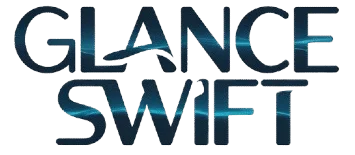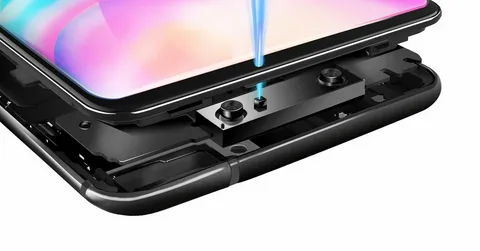In today’s rapidly evolving world of automation, AI, and robotics, the ability for machines to “see” and understand their surroundings in 3D is no longer futuristic—it’s essential. That’s where 3D ToF (Three-Dimensional Time-of-Flight) technology comes in. From warehouse robots to smartphones and autonomous vehicles, 3D ToF cameras provide the depth perception needed to operate efficiently and safely in real-world environments.
This article explores how 3D ToF works, the technology behind it, why it’s rapidly becoming the go-to choice for real-time depth sensing, and how it compares to other 3D vision systems. You’ll also learn about real-world applications, integration tips, and the future of ToF in emerging smart systems.
One powerful and widely adopted solution in this space is the MRDVS M-Series Time-of-Flight Camera, which delivers high-speed, high-accuracy depth mapping designed specifically for smart robotics, automation, and AI integration.
What Is 3D ToF and How Does It Work?
3D ToF technology works by sending out a pulse of light—typically infrared—and measuring the time it takes for the light to bounce off an object and return to the sensor. This duration, known as the “time of flight,” is then used to calculate precise distance measurements for each pixel in the camera’s field of view.
Here’s a simplified breakdown of the process:
- Infrared light is emitted toward a scene.
- The sensor detects the reflected light.
- It measures the delay or phase shift of the light’s return.
- A depth map is generated in real time, providing a full 3D view of the environment.
Unlike stereo vision, which requires two lenses, or structured light, which can be disrupted by ambient light, 3D ToF offers robust performance under a wide range of lighting and environmental conditions.
Key Advantages of 3D ToF Cameras
TThe growing popularity of 3D ToF cameras across industries is fueled by their many technical benefits:
Real-Time 3D Mapping: These cameras can capture full-scene depth data at 30–60 frames per second, enabling dynamic analysis and response in fast-paced environments.
Compact and Lightweight: Their small form factor makes them ideal for embedded systems, mobile robots, and space-constrained electronics.
Excellent Low-Light Performance: Thanks to active infrared illumination, they function flawlessly even in total darkness—ensuring uninterrupted vision around the clock.
High Accuracy: With millimeter-level precision over short to medium ranges, they deliver reliable spatial data for detailed perception.
Faster Object Detection: Instantaneous depth sensing empowers systems with real-time obstacle detection, scene recognition, and autonomous path planning.
These advantages make 3D ToF cameras a natural fit for industrial automation, consumer electronics, robotics, and autonomous drones—and for even more advanced depth vision needs, many turn to devices like the 3D Depth Camera designed to bring digital vision to life in modern AI-driven systems.
Ask ChatGPT
Where 3D ToF Technology Is Used
Industrial and Warehouse Automation
In industrial environments, 3D ToF is used to:
- Monitor item position and orientation on conveyor belts.
- Detect defective products.
- Guide robotic arms in precise object handling.
- Ensure safe human-robot collaboration with depth-aware safety zones.
Autonomous Robotics
3D ToF empowers mobile robots and AGVs to:
- Perform SLAM (Simultaneous Localization and Mapping).
- Navigate through dynamic spaces.
- Avoid obstacles in real time.
- Interact with environments intelligently.
Augmented and Virtual Reality
ToF cameras bring realism to AR/VR applications by:
- Mapping room geometry.
- Recognizing gestures.
- Anchoring digital objects to physical surroundings with precision.
Consumer Electronics
Smartphones and devices use 3D ToF to enable:
- Face ID and facial mapping.
- Portrait photography with depth blur.
- Gesture-based controls.
- Augmented reality gaming and tools.
Healthcare and Touchless Systems
In medical settings, 3D ToF supports:
- Non-contact patient monitoring.
- Touch-free controls in sterile environments.
- Motion and posture analysis during rehabilitation.
Comparison Table: 3D ToF vs. Other Depth Sensing Technologies
| Feature | 3D ToF Camera | Stereo Vision | Structured Light | LiDAR |
| Depth Accuracy | Millimeter-level | Centimeter-level | Good | Excellent |
| Frame Rate | High (up to 60 fps) | Medium | Medium | Medium |
| Low Light Performance | Excellent | Poor | Limited | Good |
| Size | Compact | Medium | Medium | Bulky |
| Cost | Moderate | Low | Low | High |
| Best Use Cases | Robotics, AR, Automation | Indoor applications | Short-range depth sensing | Long-range mapping |
This table demonstrates that 3D ToF offers a well-balanced solution for most real-time vision tasks.
Explore more: Home Security Systems
Features of a Professional 3D ToF Camera System
A high-performance 3D ToF camera, like the MRDVS M-Series, includes several advanced capabilities for commercial and industrial use:
- Wide Field of View: Captures more of the scene with fewer sensors.
- Edge AI Support: Integrates seamlessly with local processing hardware.
- Depth Filtering: Reduces noise in dynamic environments.
- SDK Availability: Supports Python, ROS, OpenCV, and other tools for rapid development.
- Robust Housing: Designed for dust, vibration, and temperature fluctuations.
Such systems are increasingly found in autonomous mobile robots, AGVs, smart security cameras, and hands-free UI systems.
Integration Tips: How to Deploy 3D ToF Cameras Successfully
If you’re looking to integrate 3D ToF into your system, follow these best practices:
- Mount Properly: Position the camera for maximum depth range and unobstructed view.
- Control Lighting Conditions: While ToF works in low light, strong sunlight may require IR filters or calibration.
- Use Edge AI: Offload processing from central servers for faster results.
- Apply Depth Filters: Clean up raw data with software filtering for better object recognition.
- Pair with RGB: Combining color and depth enhances tracking, classification, and interaction capabilities.
Real-World Case Study: Robotics in Logistics with 3D ToF
A global logistics company integrated 3D ToF cameras into its fleet of mobile robots to optimize sorting and packaging.
Project Goals:
- Avoid obstacles in real time.
- Accurately scan and measure boxes.
- Automate pick-and-place tasks with robotic arms.
Results:
- 40% increase in item throughput.
- 70% reduction in navigation errors.
- Improved worker safety due to human detection zones.
This case highlights how 3D ToF unlocks advanced automation without increasing system complexity.
Future Trends in 3D ToF Technology
1. Miniaturization and Embedded Systems
Future 3D ToF modules will be small enough to fit into wearables, AR glasses, and even earbuds—expanding spatial awareness to the smallest of devices.
2. AI-Powered Depth Processing
Integrated AI will enable smarter interpretation of depth data, from object segmentation to gesture prediction—all processed locally.
3. Fusion with Multi-Modal Sensing
3D ToF will be used in combination with LiDAR, thermal, and RGB sensors to provide richer, more context-aware machine vision.
4. Extended Range and Power Efficiency
New sensor designs will support longer range depth sensing while consuming less power—perfect for drones, autonomous delivery robots, and outdoor surveillance.
SEO Boost: NLP and LSI Keywords for “3D ToF”
To improve discoverability, sprinkle these natural variations of your main keyword throughout your content:
- three-dimensional time-of-flight camera
- ToF 3D vision sensor
- real-time depth camera
- embedded ToF imaging
- high-speed ToF module
- smart vision depth sensor
- time-of-flight 3D system
Using these semantically related terms helps search engines understand the topic thoroughly and improve your ranking potential.
Conclusion: 3D ToF Is the Smart Eye for the Future
3D ToF cameras are revolutionizing how machines understand and interact with the world. With the ability to deliver real-time depth sensing at high accuracy and speed, they’re powering the next generation of smart systems—across robotics, AR, healthcare, industrial automation, and consumer electronics.
For businesses, developers, and engineers building tomorrow’s intelligent systems, adopting ToF vision technology means faster development, smarter performance, and a competitive edge. The MRDVS M-Series is one of the most advanced ToF solutions available today—ready to help you deploy high-impact vision systems with confidence.

